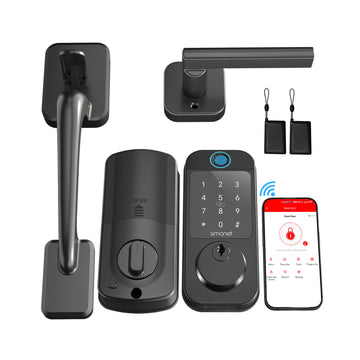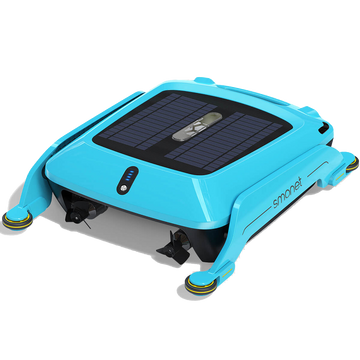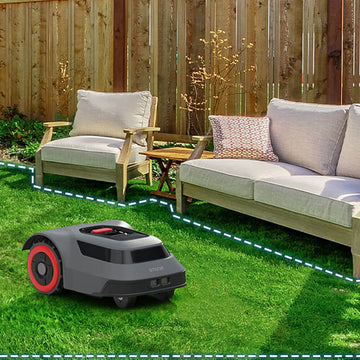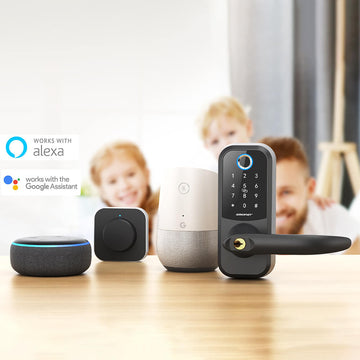In today's security-conscious world, the presence of a doorbell camera, also known as a video doorbell, is increasingly regarded as essential, akin to having a robust lock on your front door. Beyond enhancing homeowners' sense of security, these Hornbill doorbell security cameras offer a level of convenience that is unparalleled. Many models enable users to remotely answer the door, grant access, and engage in conversations with visitors from any location. Consequently, the integration of these devices into smart home systems is now an expectation rather than a luxury.
For those weary of peering through traditional peepholes to identify visitors, the acquisition of a smart doorbell camera may be a prudent choice. This comprehensive guide delves into the workings of smart video doorbells, addressing all inquiries related to this innovative home security solution.
1. What are doorbell cameras, and how do they work?
A doorbell camera represents a fusion of traditional doorbell functionality with advanced features such as a motion sensor, an integrated video camera, and a speaker system. Upon activation, this intelligent device captures activities in the vicinity of your front door, offering a glimpse into the happenings in your front yard and its surroundings.

These Wi-Fi-enabled doorbell cameras establish a seamless connection with your smartphone via dedicated applications like the renowned Vivint app. Through this integration, users can:
- Receive real-time alerts when visitors approach the door
- Engage in conversations with individuals outside the residence
- Monitor live feeds of the outdoor area
- Access recordings of past events on the front porch or entryway
The operational mechanism is as follows:
Upon installation, the doorbell camera syncs with the existing doorbell system and your home's Wi-Fi network. When a visitor presses the doorbell, a familiar chime resonates, reminiscent of a conventional doorbell. However, even before reaching the door, the individual's movements trigger the motion sensor linked to the video doorbell.
Upon detection, you are promptly notified of their presence. By accessing the doorbell camera app on your smartphone or a smart hub like the Amazon Alexa, you can view a live video feed of the visitor standing outside. In the event of missing the initial alert, the doorbell camera diligently records the visitor's presence, ensuring that you can review the footage at your convenience.
2. Do video doorbells record all the time?
Video doorbells, exemplified by the sophisticated T1 Doorbell Camera, initiate recording the moment they detect a visitor's presence. For those inclined towards customization, the cameras offer the flexibility to record upon door openings, keypad lock or unlock events, internal motion detection, or activation of the alarm system.
Typically, the captured videos are securely stored in cloud storage for a duration of up to 7 days, ensuring that the footage remains accessible for review and reference.

3. Do doorbell cameras need wi-fi?
The optimal functionality of most doorbell cameras hinges on the presence of a Wi-Fi connection. Take, for instance, the T1 video smart lock, where Wi-Fi is imperative for leveraging features such as two-way communication, video recording and storage, and receiving notifications on your mobile device following motion detection.
4. Does a ring doorbell record without internet?
The T1 Video Doorbell, celebrated for its seamless integration with online platforms for live streaming, notifications, and cloud-based storage of footage, does indeed possess a limited capability to function offline. When faced with a lack of internet connectivity, the T1 Video Doorbell can independently record video content triggered by motion detection or doorbell activation. However, the absence of an internet connection restricts access to real-time views and immediate alerts on your mobile device.
Upon the restoration of an internet connection, the recorded footage seamlessly transitions to the cloud for your review. It is crucial to recognize that the full range of functionalities and benefits offered by the T1 Video Doorbell is most effectively experienced when connected to the internet, ensuring continuous monitoring and access to all features.
Please note that in the event of an internet outage, the video doorbell can only record motion-triggered events and visitor information locally.
5. Will a ring doorbell work if wi-fi goes out?
In the event of a Wi-Fi disruption, the T1 Video Doorbell exhibits a degree of resilience in its operational capacity. While the absence of Wi-Fi connectivity may impede live streaming, notifications, and cloud-based storage of footage, the doorbell retains the ability to locally record video content triggered by motion detection or doorbell activation.
Upon the restoration of Wi-Fi connectivity, the recorded footage seamlessly transitions to cloud storage for subsequent review. Despite the T1 Video Doorbell's reliance on a stable Wi-Fi connection for optimal functionality, its inherent backup mechanism ensures the preservation of critical events even during transient Wi-Fi interruptions.

6. Conclusion
In conclusion, the evolution of doorbell cameras, such as the innovative Hornbill T1 Video Doorbell, has revolutionized home security and convenience. These intelligent devices seamlessly blend traditional doorbell functionality with cutting-edge features like motion sensors, integrated cameras, and remote access capabilities. By providing real-time alerts, enabling remote conversations, and facilitating live monitoring of outdoor areas, smart video doorbells have become indispensable components of modern smart home systems. While the reliance on Wi-Fi connectivity is paramount for optimal performance, the ability of these doorbell cameras to operate autonomously during Wi-Fi disruptions underscores their reliability and commitment to ensuring continuous surveillance and security for homeowners.















